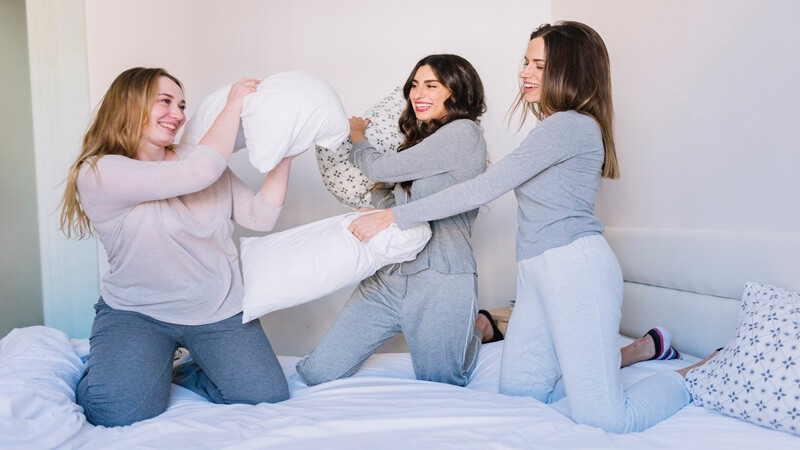A pillow cover is more than just a protection layer for your pillows. It’s an important part of your home décor that can instantly change the look of your bedroom and turn a boring room into a well decorted room. A good pillow cover not only protects your pillow from dust, stains, and bacteria but also adds style, color, and personality to your bedroom.
However, choosing the perfect pillow cover can feel overwhelming with so many options available with different fabrics, sizes, textures, and patterns. In this guide, we’ll walk you through everything you need to know to pick pillow covers that are both functional and stylish.
Why Pillow Covers Matter
Pillow covers aren’t just decorative items they play a big role in comfort and hygiene. A good pillow cover protects your pillow from spills, dust, and allergens, keeping it clean for longer. At the same time, it can transform the look of your room without needing to replace your pillows.
Imagine changing your pillow covers with the seasons light linen for summer, cozy velvet for winter. Small changes like these can make your home feel fresh, attractive, and more arranged.
So, choosing the right pillow cover is all about function, comfort, and aesthetics.
Key Factors to Consider When Choosing a Pillow Cover
before buying a pillow cover you should consider some key factors like material, size and fit, design and maintainence:
1. Material Matters
The fabric of your pillow cover affects both how its look and feel. Here are some popular options:
- Cotton: Cotton pillo covers are Soft, breathable, and easy to clean. Perfect for daily use and ideal for warm climates.
- Linen: They are Lightweight, natural, and gives a rustic, elegant look. Linen pillow covers are durable and become softer with time.
- Velvet: they look Luxurious and cozy, perfect for creating a rich, elegant vibe in your living room or bedroom.
- Silk or Satin: They are Smooth and shiny, ideal for a glamorous touch, and gentle on skin and hair.
Your choice depends on where the pillow will be used and the overall style you’re aiming for.
2. Size and Fit
Pillow covers come in standard sizes, but it’s always a best choice to measure your pillow dimensions before buying a pillow cover. A good fit makes your pillow looks clean and comfortable. For a square cushion, standard sizes like 16×16 inches, 18×18 inches, or 20×20 inches are common. Rectangular pillows often use 12×20 inches or similar dimensions.
3. Design and Color
Your pillow cover should always complement your room décor instead of clashing with it. Neutral shades like white, beige, or soft grey are perfect if you want a calm, minimalistic vibe, giving your space a clean and sophisticated look. On the other hand, bold patterns or bright, vibrant colors can turn your pillows into statement pieces that instantly catch the eye and add personality to your room.
Don’t be afraid to mix textures and patterns it can make your space feel more layered and interesting. For example, pairing a cozy knitted pillow cover with a smooth cotton one creates a stylish contrast that feels warm and inviting.
4. Ease of Maintenance
Choose pillow covers that are very easy to clean,wash and maintain, especially for daily-use pillows. Removable covers with zippers are ideal they allow you to clean your pillow frequently without any issue. Machine washable fabrics like cotton or polyester make maintenance simple, while delicate fabrics like silk may require hand washing or dry cleaning.
How to Style Pillow Covers in Your Home
Pillow covers are an easy way to refresh your décor without spending a fortune. Here are some styling tips:
- Layering: Use multiple pillow covers of different sizes and textures to create a cozy, inviting look on your bed or sofa.
- Seasonal Changes: Swap covers according to seasons—light fabrics for summer, warm fabrics for winter.
- Mix and Match: Try Combining solid colors like maroon,olive,blue with patterns to create visual interest without overwhelming the space.
- Themed Spaces: Use pillow covers to tie your room’s theme together, whether it’s modern, rustic, or bohemian.
FAQs
Q1: Can pillow covers help with allergies?
Yes! Pillow covers that are made from hypoallergenic materials like cotton or microfiber resist dust mites and other allergens, making your pillows much healthier to sleep on best for sensitive skin.
Q2: How often should I wash pillow covers?
If you use your pillows every day, it’s a good idea to wash the covers every week or two. Of course, if there’s a spill or stain, wash them right away to keep them fresh.
Q3: Will pillow covers fit all types of pillows?
Not always. It’s important to check the size and shape of your pillow and pick a cover that fits completely so it looks clean and stays in place.
Q4: Can I mix different fabrics for pillow covers?
Definitely! Combining fabrics like cotton, linen, and velvet can add versatility,texture and style to your room, giving it a more layered and curated look.
Q5: Which is better: zipper pillow covers or envelope-style covers?
Both have their perks. Zipper covers hold the pillow securely and won’t slip out, while envelope-style covers are easier to remove and wash. Pick whichever works best for your convenience and comfort.
Final Thoughts
Choosing the right pillow cover isn’t just about buying a design thats look pretty or a color that looks good on your bed or sofa. It’s about finding the right balance between comfort, durability, style and functionality so that your pillows not only look great but also last longer. When you pay attention to details like the fabric, size, color, and how easy it is to clean, you can give your home a fresh, updated look without much effort. The right pillow covers can completely transform the feel of a room, making your bedroom feel more cozy, attractive, and stylish at the same time, while also protecting your pillows from dust and bacteria in everyday use.

